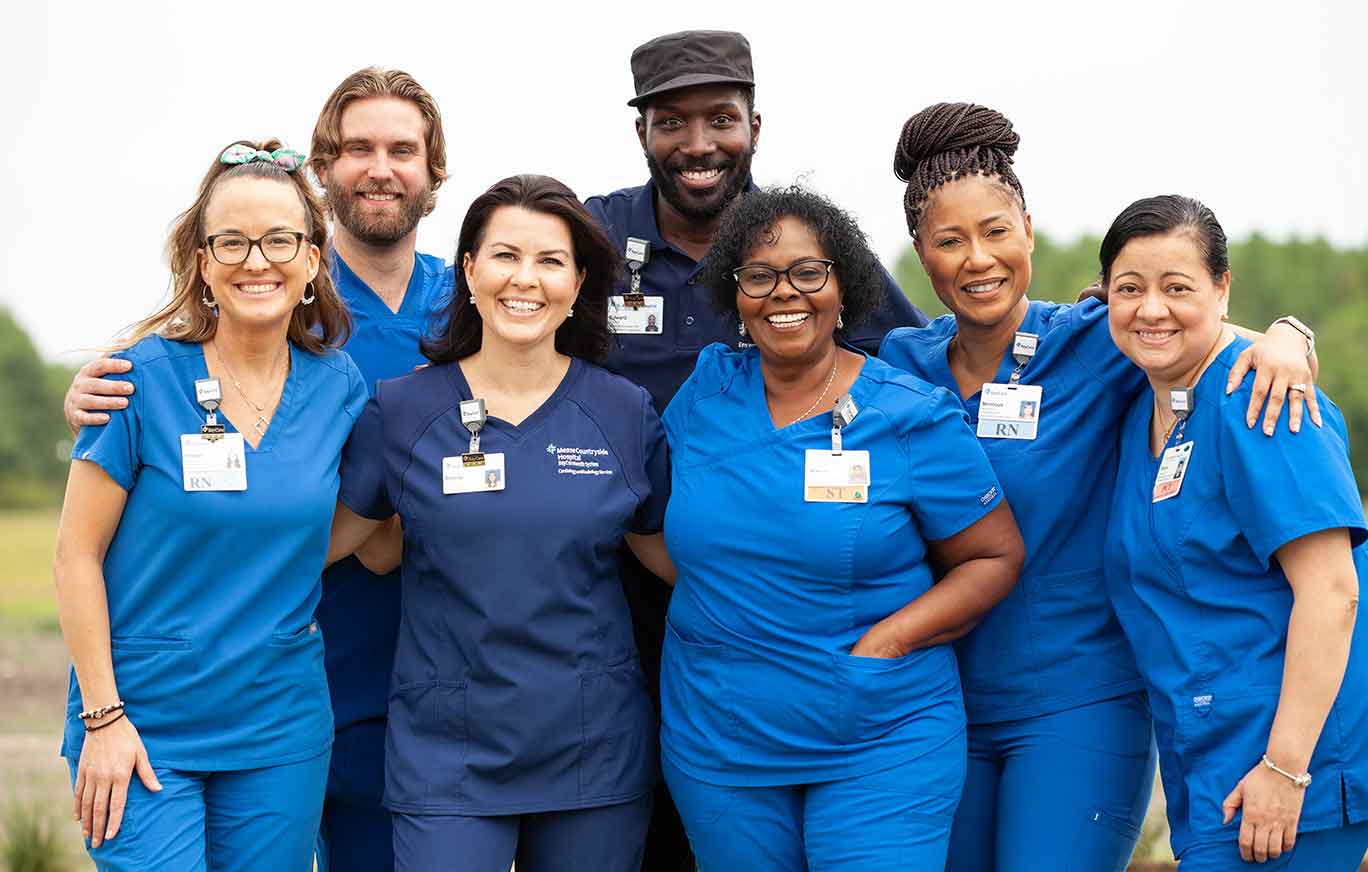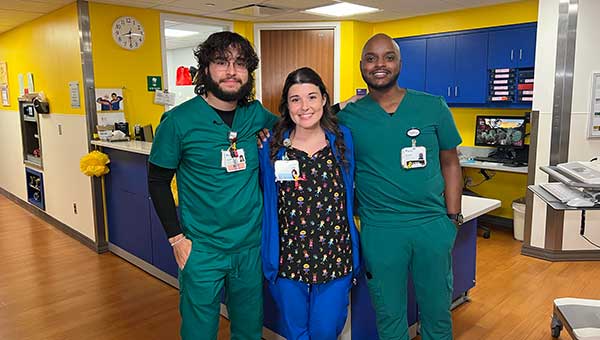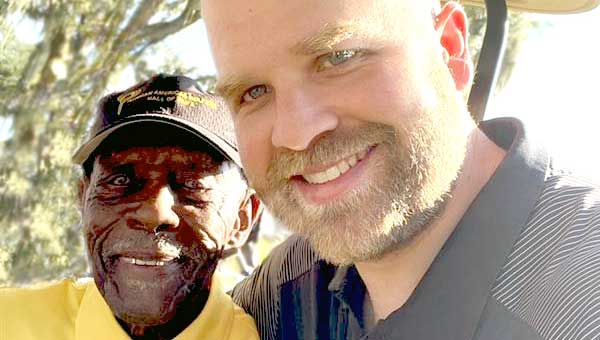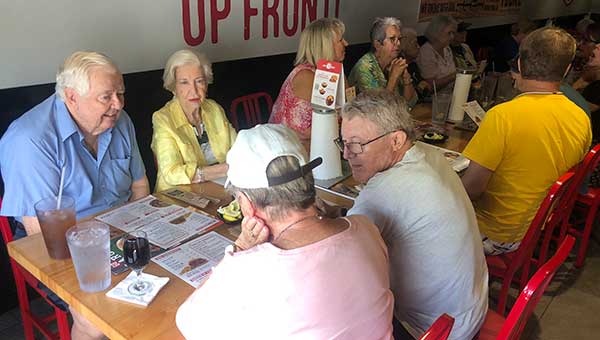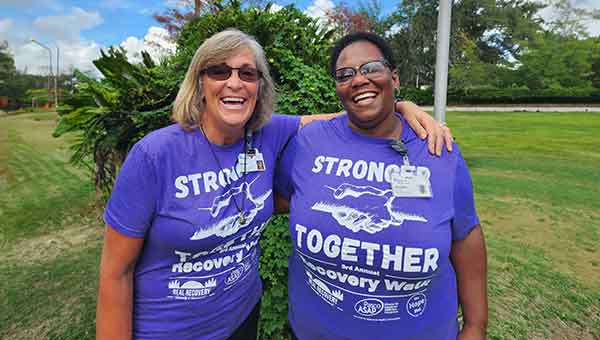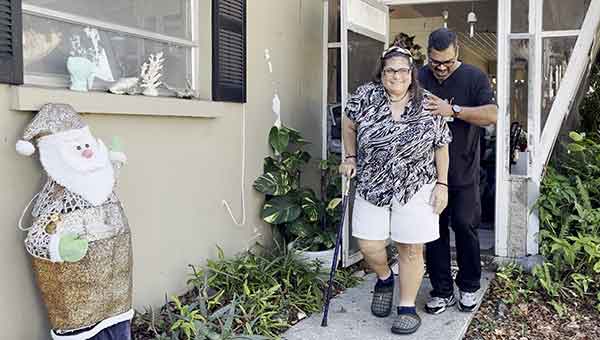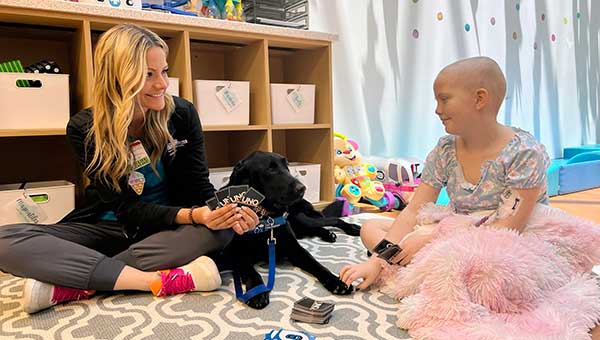BayCare Team Members Helping Others
Every day, BayCare team members step up to help others however they can. Here are a few of their efforts from 2023.
Childhood Cancer Survivors Give Back
When Isabella Ramirez was diagnosed with stage 4 cancer at age 17, her life was saved by the treatments she received in the pediatric oncology unit at BayCare’s St. Joseph’s Children’s Hospital (SJCH). She was determined to pay back the care she was given by becoming a registered nurse and working in that same oncology unit.
She achieved that goal, and now she’s working alongside Naidel Conde and Norman Mangol, who also were diagnosed with cancer as teenagers, were treated in the SJCH pediatric oncology unit and are now back as caregivers for children who must undergo cancer treatments. Conde and Mangol are working as patient care technicians while studying to become registered nurses.
The three team members have a deep understanding of the toughness it takes for children to battle cancer. They are right where they hoped to be – at the bedside, providing comfort and reassurance to children and their families, and demonstrating every day that children can thrive after cancer.
104-Year-Old Golfer Credits Rehab Specialist for Regained Strength
After a bout with dehydration a couple of years ago, 104-year-old hall-of-fame golfer Herbert Dixon decided he didn’t want to be “a helpless old man.” He wanted to be able to hang out with his friends at the golf course, something he’d done since he was 15 and learned to play golf, launching what would become a highly successful pro career. Dixon won 63 titles on the United Golf Association Tour and was inducted into the African American Golfers Hall of Fame in 2012.
But in 2023, he needed some help. He found it in Josh Adlam, a rehabilitation team member at BayCare’s Bartow Regional Medical Center. The pair worked together to improve Dixon’s strength and balance. He was “the perfect patient – positive, a hard worker,” Adlam said. In September, when the Bartow community marked Dixon’s 104th birthday by holding a ceremony and naming a street after him, Dixon and Adlam were there, celebrating the moment together and wearing big smiles.
BayCare Brings Dementia-Friendly Dining to Area Restaurants
Team members at BayCare’s Memory Disorders Clinics at Morton Plant Hospital (MPH) in Clearwater and St. Anthony’s Hospital in St. Petersburg have been helping people diagnosed with dementia navigate the challenges of that condition for years. But in 2023, they had a new idea: Dementia-Friendly Dining.
Working with willing restaurant managers and their wait staffs, Celisa Bonner, a social worker at the MPH center, trains them in how to understand and positively interact with diners who have dementia, since restaurant dining can create anxiety and confusion for those with dementia. After completing training, restaurants display a Dementia-Friendly Dining placard at their entrances so diners know they can expect a comfortable experience tailored to their special needs.
“A program like Dementia-Friendly Dining enhances a person’s dignity and quality of life because of socialization and reducing isolation and depression,” Bonner said.
Sharing Their Journeys to Help Others
Wendy Dillingham and Cherrice Peters-Tanksley began using drugs in their early teens and continued for decades. Both women desperately wanted to change their lives. They eventually got clean and wanted to show others the way. They got the opportunity at BayCare.
BayCare, the largest provider of behavioral health services in West Central Florida, knows that people struggling to free themselves from addictions can often relate best to caregivers who are in recovery themselves.
Dillingham earned a college degree and certification as a peer recovery specialist and was hired eight years ago as the senior case manager for BayCare Behavioral Health’s Adult Treatment Center. “I’m devoted to BayCare, because the company waited six months for me to clear up my records so I could be hired,” she said.
Peters-Tanksley works as a mental health technician at BayCare’s Community Recovery Center and is preparing to get certified as a peer recovery specialist “so I can help others move from where I was – barely surviving – to a fulfilling life,” she said. “It’s mentally tough to go through a rehabilitation program, but I want people to know it’s worth it.”
Transforming Lives With Free Joint Replacements
A trio of patients unable to afford joint replacement surgeries received an early holiday surprise in 2023. As part of BayCare’s support of Operation Walk USA, a national organization dedicated to helping relieve suffering, the three local residents received free knee or hip replacement surgeries and follow-up care.
Among the recipients was Kristine Martin, 53, of Clearwater, who was in pain and disabled for years after a motorcycle accident crushed her knee. “Oh my god, oh my god! Thank you!” she said upon learning of her good fortune.
The surgery was performed successfully in December at St. Anthony’s Hospital, and less than a week after, Martin was walking with a cane. The surgeons donated their services.
A Four-Legged Child Care Specialist
One of St. Joseph’s Children’s Hospital’s most-loved team members just arrived in June: BayCare’s first facility dog, a Labrador/Golden Retriever mix named Revere.
Revere trained two years for his current full-time job, working alongside his handler, BayCare Child Life Specialist Hannah Murray, every Monday through Friday. As Murray visits her young patients to explain procedures, holds their hands during treatments and helps them cope with their illnesses, Revere pads along beside her wearing his own BayCare ID badge. In addition to providing comfort like a therapy dog does, Revere can perform more than 40 tasks such as pulling a child-sized wagon, opening and closing drawers and participating in games. He goes for walks with patients to help increase their mobility. He’s also just a friendly presence and a needed distraction.
“He spends his days snuggling up with patients who aren’t feeling well, helping kids cope,” Murray said.


